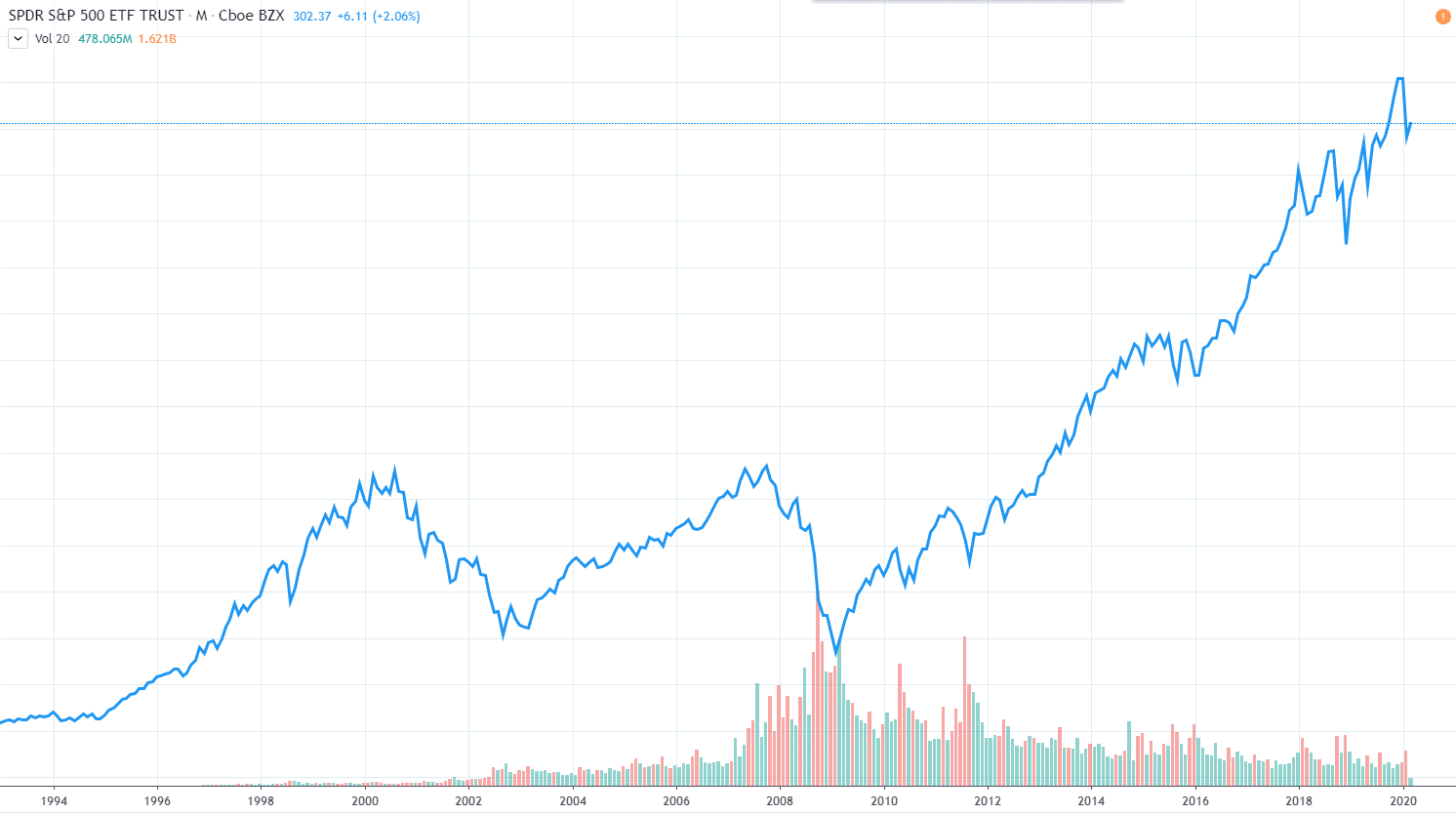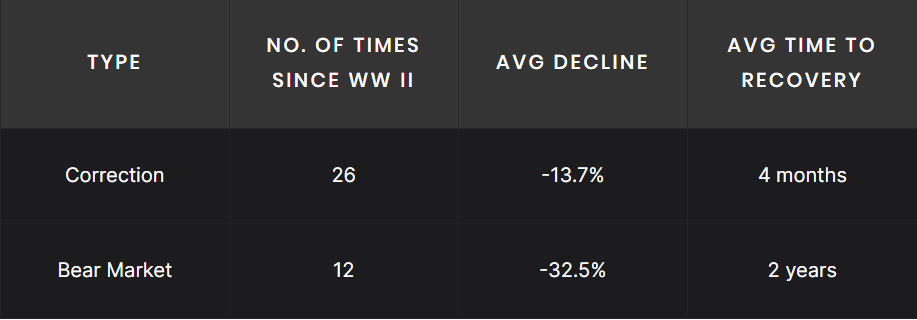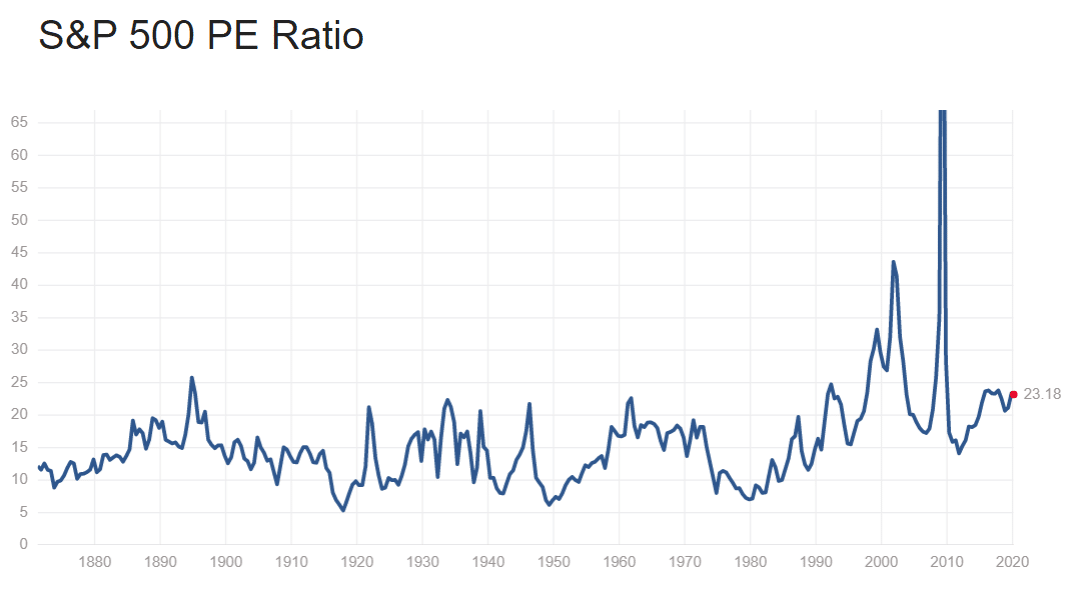This is a guide on how you can not just survive, but thrive during a stock market crash.
Here's the deal.
If you are not familiar with options - the more you should read till the end of the post.
Once you learned about options, you have an unfair advantage over most investors.
Because at the end of this post - you are going to learn how you can use option strategies to thrive during a stock market crash
#1 - Prepare Your Shopping List
During the bull market, I have heard people saying that most of the quality companies are overvalued.
And that is true.
Most of them were.
But here's the thing.

Stock prices can change everyday (especially during a market crash).
Don't freeze in fear when the opportunity comes for you to buy.
And during a stock market crash, these are super volatile periods.
And at the end of this post, I am going to share with you how you can take insane advantage of these volatility.
Sounds good?
But first, let's address your shopping list.
I covered this extensively in my Value Investing Framework - where I bring you through a 3-step process on value investing.
A shopping list is essentially a list of quality companies which you know your entry price.
There were a lot of companies like Amazon, Visa, Google - which I like the fundamentals.

However - they were overvalued for a long long time.
But these stocks are on my shopping list and I know exactly when I will start buying these stocks.
So if you have not build your shopping list yet - I strongly suggest you build one, you can refer to my Value Investing Framework if you need some help.
#2 - Understand Data. So You Don't Panic
A veteran investor told me this - "Investing is more about emotional stability than knowledge.
And if you look at the data - you can probably understand why.
It is extremely hard to lose money if you think long term.
So I want to share with you some data so that you can sooth our nerves if we are ever worried about a crash.

Price of SPY over the years (TradingView.com)
The stock market goes up over the long run.
There are three reasons that I can think of, (don't quote me on this):
- Inflation
The first reason is inflation - prices of product and services go up over the years.
If prices of product and services go up...the businesses who are selling these
products and services will also be making higher revenues - and earnings.
If a company earnings increases - what do you think will happen to the share price?
Yea, you are right.
The share price increase over time. - Advancing Medical Care and Increasing Population
It should comes as no surprise that our population size is growing over time.
Especially with advancing medical care - an average human lifespan is increasing over the years.
With an increasing population, there tend to be an increase in economic growth.
(Imagine if a business have only 20 customers compared to 200.)
- Advancing Technology and Productivity
Humans are a unbelievable species.
The pace of our technology advancement led to increase in productivity.
With increased productivity - the overall economic growth will thrive over time.
In any case, the bottom line is this.
It is so hard to lose money if you have a long term outlook on your investments.
(Of course - only if you hold quality companies)
#3 - Be Prepared To Wait
Whenever there is a correction - I know some of us will think:
"This is just temporary, the market will rebound soon".
I know because I tell myself that all the time as well.
But at the same time - I fully acknowledge that a bear market is not impossible.
One of my investment approach is - "Always manage your downside, and your upside automatically follows".
So I wanted to give you some perspective of how long you could be waiting for, whether it is a correction or a crash.
According to "Here’s how long stock market corrections last and how bad they can get" - an article from CNBC:

If it is a correction - we can expect an average decline of 13.7%.
But if it grows into a bear market - we can be expecting a decline of 32.5% and 2 year of recovery.
So if we ever go into a bear market - our average time to recovery is 2 years.
Note that these figures is the average for the S&P 500.
If you are investing in companies - the decline could be much more.
Did You Know?
- A bear market is defined as a decline of 20% or more over a sustained period of time - typically two months or more.
- The bear market during October 2007 to March 2009 dropped 57% and then took more than four years to recover.
But, here is the good news.
Even if the bear market were to take four years to recover - you may not need to wait the whole four years before you start seeing green in your portfolio.
And I am going to share with you how to do it.
So keep reading!
#4 - Be Prepared To Add
This is the single thing that changed my entire investment portfolio.
Many of my losers became winners simply by adding into my "losing" positions.
However, some of us may not be able to add to our losing positions for two reasons:
- Fear of market dropping further
- Lack of Cash
Let's address your fear first.
In fact, we already seen the data of the stock market over the years.
It will always go up in the long run.
But you need to note that this is for the stock market index - not individual companies.
If you are holding a poor quality company, there may be a chance the stock price may never recover (especially companies that may be over-leverage with high debt).
So if you had bought stocks without doing your homework - you might want to re-look at your portfolio.
“It is far better to buy a wonderful company at a fair price than a fair company at a wonderful price.”

Let's address the next one - lack of cash.
I personally keep a percentage of cash to stocks based on the market PE Ratio.

S&P 500 PE Ratio (Extracted From Multpl.com)
At any point of time, I will still have money in the stock market - because we will never know when the bear market will come.
If I had zero equity in the market, then I would have missed out on a lot of gains during the bull run.
At the same time - if I was fully invested, then I wouldn't have much cash to add into my positions if a correction or even a bear market comes.
Using the SPY PE ratio to gauge my cash to equity positions kinda gives me a sweet spot.
So why is it so important to have cash to add into your positions?
Did You Know?
If your stock loses 50%, it will need to have a 100% gain just to break even.
Example:
You bought a stock for $10, and it fell to $5 - a 50% drop.
The stock $5, has to increase by $5 - a 100% gain, just to break even.
And a 100% gain in stock price will probably take some time.
But things are different if you add more money to your positions, and lowering the average cost.
How It Works:
You spent $1000 buying 100 ABC @ $10 each.
ABC shares fell by 50% over time due to a bear market
ABC shares need to have a 100% gain for you to just break even on your investments.
You spend another $1000 buying 200 shares @ $5 each.
ABC shares need to have a 100% gain for you to just break even on your investments.
ABC shares now only need to go up by 33.3% for you to breakeven.
But here's the thing.
It takes courage to add to a losing position.
And where do you find that courage?
The only way is by understanding the company you invested in.
I have met investors who don't even know how the company makes its revenue.
That is a really dangerous place to be in - because you will be scared to death when prices fall - and you are going to want to sell the shares and lock in your losses.
(Remember when I mentioned investing in more about emotional stability)
For investors who understand that they are investing in quality companies - they are always happy to add more when prices fall.
The bottom line?
Remember I said that you didn't have to wait for 4 years recovery during the 2008/2009 bear market.
The answer is to add to your positions and lower the break even price.
Your portfolio will be in position for some crazy growth as the market recovers.
#5 - Learn to Profit The Other Way Round
One of the ways to profit in the bear market is by short-selling.
Most people are usually concerned with short-selling as it has unlimited risk (theoretically).
But what if there is a way to protect your portfolio without taking "unlimited" risk?
And I am going to share with you two ways.
The first way is simply by buying an Inverse ETF of Dow Jones.
As the name suggests, it is inverse of the Dow Jones Index.
The Ticker Symbol for this inverse ETF is called the "DOG".
The price of the DOG goes up as the market fall.
The second way is simply by buying put options.
If you want to keep things simple - you can simply buy a put option on the entire index SPY.
Buying a put options allows you to make leveraged returns as the market falls.
However, ideally, you should have bought the put option in preparation of the crash (i.e. before the crash).
The reason is because of volatility.
The higher the volatility - the more expensive an option is.
But the good news is that if you can take advantage of this volatility.
#6 - Taking Advantage of Volatility
Options Investors are familiar with this term - volatility.
Why is volatility important?
Because an asset's volatility is a key factor when pricing options contracts.
This means that when volatility increase, option prices increases.
And do you know when volatility will have a sudden spike?
That's right.
It's during a stock market downturns.
Why do I care about volatility spikes?
Because when option premiums increases - I can sell put options at a higher premiums.
Selling put options are a great way to get paid while waiting to buy stocks at undervalued prices (if you do it correctly).
This concept is used by Warren Buffett as well.
It is kinda like modelling your portfolio like an insurance company which I explained in this video.
This is also how I build my cash flow portfolio that brings me cash flow every month.
Conclusion
So these are the 6 ways you can implement to thrive in a market crash.
Which of these are you considering to do first?
Is it building a shopping list of quality companies?
Or would it be learning how to use options to take advantage of the increased volatility.
Leave a comment down below!
